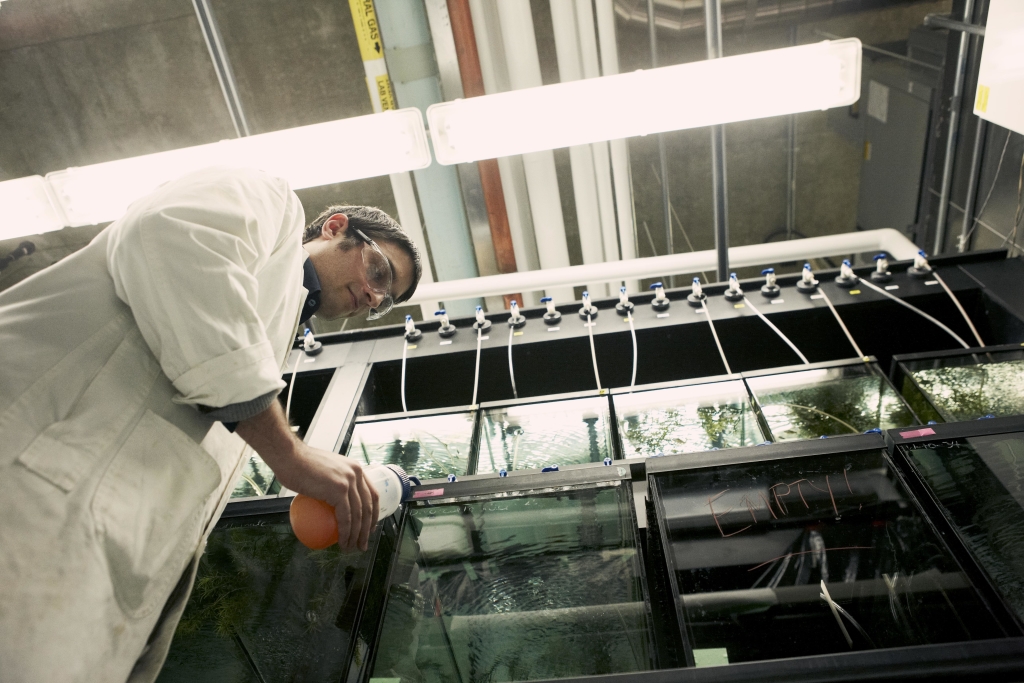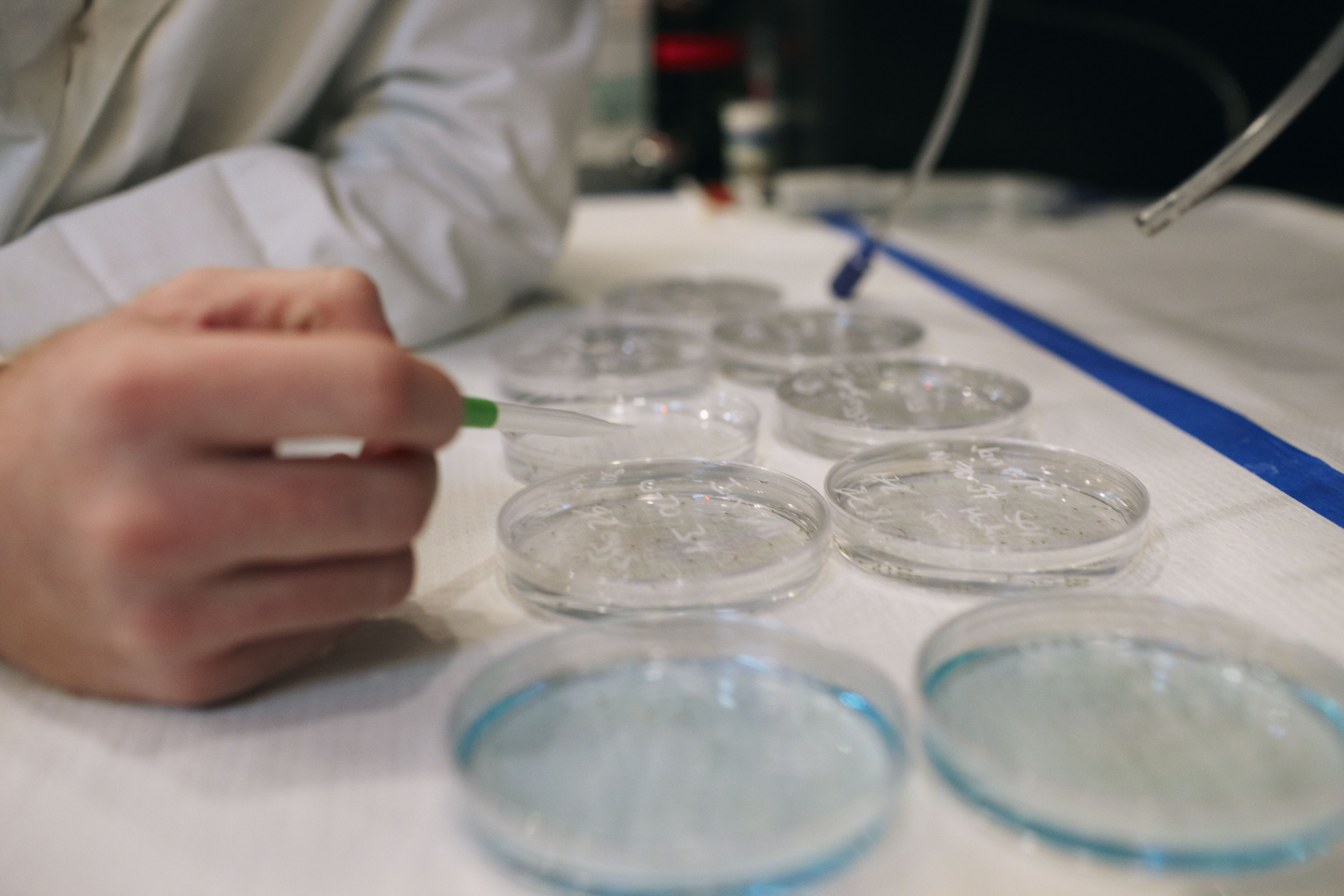The University of Ontario Institute of Technology (UOIT) is small but mighty when it comes to its researchers studying a variety of areas within ecotoxicology.
“We are smaller than most universities but we have boutique expertise in water research,” says Alison Burgess, Partnerships Officer in the Office of Research Services. “While we don’t have a large research centre, we have individuals who are excelling in their own areas of water research and are making a difference locally, nationally and internationally.”
Having individual researchers working on their own projects is an advantage for industry and municipalities looking to partner with the university, says Burgess.
“Since we are smaller, we can adapt more quickly and have the flexibility to easily pick up a project if an industry partner comes to us with a specific need. Our researchers aren’t fixed in one direction so if we are approached with a problem that needs solving and we have the expertise, then we can tackle it. We are a rapidly growing university with strengths in research and we are very interested in hearing what industry’s needs are.”
Prof. Douglas Holdway is one of UOIT’s leading experts in ecotoxicology. He is a Canada Research Chair in Aquatic Toxicology and is also a science director of the Canadian Rivers Institute. One of the research areas the biology professor is investigating is the impact of exposure to pharmaceutical and personal care products on fish growth and reproduction. As part of his research, Holdway has access to a $2.2 million lab where fish are kept in a high-tech, flow through aquatic toxicology laboratory for his controlled experiments.
“My lab is very unique with respect to real-time monitoring and control, which is done through numerous sensors and linkage to computer programs through the Internet,” says Holdway. “This arrangement permits real-time continuous measurement and control of temperature, flow rates, pH and dissolved oxygen levels. Automatic alarms are triggered and sent when failures are detected in pumps, heaters, coolers and water treatment. Essentially we can monitor and control the lab from anywhere in the world where there is Internet access.”
In addition to the warm and cold fish tanks, the lab also includes state-of-the-art testing equipment including a RT-PCR instrument, which is part of the SOWC ecotoxicology node.
“We are using this instrument to measure gene expression of various biomarkers in enzymes to provide mechanistic understanding of what is occurring during toxic exposure to various contaminants associated with treated sewage effluent,” says Holdway.
Some of the contaminants Holdway is examining are grouped with the pharmaceuticals and personal care products. This includes a variety of steroids, such as estrogens and progestins, non-steroidal anti-inflammatory drugs and hydroxylpropyl-B-cyclodextrin.
One of his current projects involves examining the impact of short-term exposure to hydroxylproply-B-cyclodextrin, an ingredient commonly used as a deodorizer in air fresheners and laundry detergent, on three different species of fish. In his lab, he exposed the fish to the chemical and found the fish’s offspring were smaller in size and had a decreased ability to handle stressors.
“This research is important not only to the environment and aquatic life, but to human health as well,” says Burgess.

Photo: Researcher tending to water tanks in Professor Doug Holdway’s Aquatic Toxicology Lab at UOIT (Photo Credit: UOIT)
Another UOIT biology professor examining ecotoxicology is Prof. Andrea Kirkwood, who works both in the field and lab. Along with her six-person research team, Kirkwood performs applied aquatic ecology research in ponds, wetlands, rivers, lakes and stormwater ponds. Conducting research on impacted aquatic systems has also opened up opportunities to isolate and characterize algae for industrial applications.
One of the projects currently underway is isolating and characterizing algal strains from wastewater and degraded systems to determine their potential in algal biofuel reproduction as well as carbon sequestration. These strains are targeted for use in wastewater-fed bioreactor systems.
The Kirkwood lab is also investigating how algal communities can be used to determine the impact of various land-use activities on water quality in Ontario surface waters. Algal communities can respond rapidly to changing conditions and therefore have the potential to be sensitive bioindicators of changing landscapes and watersheds. Researchers are currently conducting field studies on the Nottawasaga and Vermillion Rivers in Ontario as well as tributaries in the Lake Simcoe and Lake Ontario basins to see what impact activities, such as urban development and mining, are having on the water quality and algal communities.
Finally the team of researchers has also examined urban wetlands to assess how their ecological function is impacted by urbanization. In one study, Kirkwood and her colleagues found that urban wetlands have a limited capacity to degrade chlorinated organic contaminants, such as pesticides. These findings suggest that urban wetlands may not be providing the important ecosystem service of water purification typically associated with wetlands.
“This points to the need to be aware of these chemicals and the potential of them getting into urban wetlands and creating a toxic environment,” says Burgess.
UOIT also has researchers in engineering who are studying water issues. Professor Brendan MacDonald is an expert in paper-based microfluidics. With funding from Grand Challenges Canada, he has developed a paper test strip that can detect arsenic levels in water. The paper is designed to control the flow of water as it passes through, allowing it to react with the chemicals embedded in the paper, which then produces the results. It’s a vital technology in places such as Bangladesh where a high number of drinking water wells are contaminated with arsenic. However, this technology can be used for various types of water quality testing and is a quick, easy and inexpensive way to test on-site without any required expertise.
“This technology has broad applications and Professor MacDonald is definitely interested in connecting with industry partners looking for paper-based testing,” says Burgess.
Another engineering professor, Mohamed Yousseff, has already teamed up with an industry partner and is currently developing an energy efficient water pump for the commercial market. In conjunction with Grundfos Canada, a water pump manufacturer for commercial buildings in Oakville, Yousseff is creating a pump that will minimize water consumption as well as better manage electrical energy use. He is doing this by designing a pump with a permanent magnet motor, which is more efficient and will reduce the manufacturing cost. The pump also has an integrated controller which will help improve energy efficiency.
“The current model being used in commercial buildings is outdated and uses double the amount of energy required,” says Burgess. “This is an example of one of the many partnerships our researchers have with local companies where the company has come to us with a problem and we have helped them find a solution.”
In addition to its partnerships between researchers and industry, UOIT also places a strong emphasis on connecting students with industry through co-op and internship programs as part of the education process, adds Burgess.
“Experiential learning is a strong area of focus for us. We are always looking for ways to give our undergraduate and graduate students world experience. We are always looking for new partners and new opportunities.”


